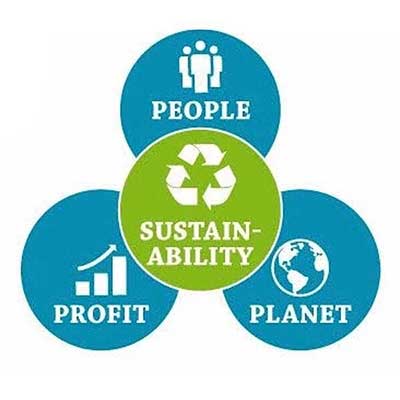Relevance: GS-3: Conservation, environmental pollution and degradation, environmental impact assessment
Key phrases: Dasgupta Report of 2021, Ecocentric growth Model, System of Environmental-Economic Accounting (SEEA), Build Back Better world , conservation corps, Gross National Happiness
Why in News ?
- Recently, Dasgupta Report of 2021 on the economics of
biodiversity hammered the point home:
- Nature is a blind spot in economics when its value must be at the heart of economics.
- Climate change is only half the problem; ecosystems destruction and biodiversity loss destroy natural barriers to climate threats, reduce the overall resilience and put global food security at risk.
- Another report by the World Bank estimates that failure to protect pollinators, fisheries and natural forests will cost the global economy $2.7 trillion annually by 2030.
Highlights
- India’s commitment to net-zero by 2070 at COP26 has reignited a global debate on the tension between economic development and ecologically compliant growth.
- Framed as a zero-sum game, developing countries such as India and China, with booming economies, insist that decarbonisation and ecologically compliant growth will severely impact their ability to meet the development needs of their people first.
- Globally, businesses and governments are realising the need to transition to an economic paradigm recognizing the interdependence between ecology and economy.
Global opportunities
- Ecocentric growth Model: Putting ecology back into the economy, the world can build a regenerative economy, sustainably unlocking the full power of our rich natural capital.
- Net Zero Future: Bold climate action towards the net-zero future is a $26 trillion opportunity for a sustainable, equitable future for people & biodiversity by 2030.
- Out of these, 15 key transitions towards a nature-positive future, across land & ocean use, infrastructure and energy will deliver $10.1 trillion in business opportunities and create 395 million jobs by 2030.
- SEEA brings Objectivity : The UNEP has developed the System of Environmental-Economic Accounting (SEEA) to help governments make better decisions that value nature.
- Build Back Better world
- The US Build Back Better bill allocates $15 billion for a “conservation corps” to employ people in managing and maintaining the country’s forests and for ecosystem clean-up.
- Similarly, the UK is committing £600 million to nature-based solutions to restore peatlands and plant trees.
- Bhutan case study:
- Bhutan is making huge strides at moving from being an LDC to a developing country.
- It is one of three countries to be carbon negative through strict policies preventing deforestation.
- Its Gross National Happiness framework puts ecology on par with economic considerations in decision-making.
India’s opportunity
- India’s steps to a green economic transition so far have been
primarily energy-focused :
- India’s 2021 stimulus package is more climate-friendly, with two-thirds allocated to green recovery and a transfer from fossil to non-fossil energy sources.
- Incentives for setting up designated manufacturing hubs for renewable energy in India, providing support for renewable energy and extending the timelines for renewable energy projects affected by the lockdown are welcome.
- India is now among the 90 countries to sign up to the UN’s SEEA to value nature in policymaking.
- Reduce Coal dilemma:
- The country’s dependence and support of coal may undermine this.
- India is still one of the largest coal pipelines in the world and will open 40 new coalfields in some of its most ecologically-sensitive forests.
- New policies based on ecocentric based economic determinism
- Criticisms have been raised about its revised forest and biodiversity policies, which prioritises business concerns but fails to offer adequate protection for biodiversity, or for its diverse indigenous communities.
- Its silence at COP26 about its forest-based NDC and the country’s failure to sign on to the voluntary deforestation elimination pledge raises serious questions about the future of the country’s forests.
- An ambitious plan to invest in the country’s ecosystems, needs to
deal with its rural employment and economic crisis.
- For example, a rural recovery plan to rewild the North-East’s forests and agricultural lands – 4.1 million hectares – would generate earnings up to ₹4,50,544 crores annually over a 30-year period through agroforestry produce and sustainable bamboo.
- Investing these earnings back in the community could deliver universal basic assets like healthcare, education, energy and water access to over 6 million households – with spending on healthcare and education matching international OECD standards.
Conclusion
- The next ten years are imperative to place ecology at the centre of the national and regional landscape to meet the country’s growing climate threats to its water and food systems, and to its rural communities.
- India’s rich biodiversity is a natural buffer against these threats.
- Investing in a transition to ecology in the economy is no longer optional: it is a necessity.
- India’s commitment in COP26 and Panchamrit Pledges reflects the country's strong aim for an environmentally inclusive growth.
Mains Question
Q. India’s policies on environmental protection are very high in objectives, ambitious on intent but ineffective on outcomes. Critically examine this statement with special emphasis on recent Draft Environment Impact Assessment(EIA) Rules.( 15 marks)
Source: The Hindu BL







